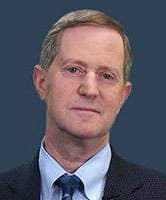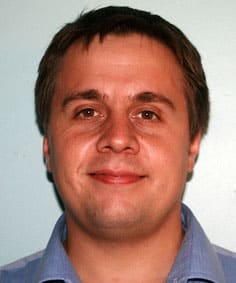Epigraph Vol. 22 Issue 4, Summer 2020
Understanding new-onset refractory status epilepticus (NORSE): Awareness and research
Status epilepticus is described as seizures that persist for at least 30 minutes; it’s estimated to occur in 10 to 40 people per 100,000. Among all cases of SE, about 30% persist even after treatment with two medications: this is known as refractory status epilepticus (RSE).
Most of the time, the cause of RSE is identified in the first few days. RSE can be a result of epilepsy; it also can happen in people without epilepsy due to a stroke, brain injury, infection, or tumor.
About 10% to 20% of the time, these causes are ruled out and the person is said to have NORSE, or new onset RSE. NORSE is not a formal diagnosis: It merely describes the circumstances.
Because NORSE is a subset of a subset of people who have status epilepticus, it’s quite rare. For a rough estimate:
10 to 40 per 100,000 --> SE
30% of SE cases, or 3 to 12 per 100,000 --> RSE
10% to 20% of RSE cases, or 0.3 to 2.4 per 100,000 --> NORSE
ILAE spoke with Lawrence Hirsch and Nicolas Gaspard about increasing awareness of NORSE and the challenges to doing research in an area that’s relatively new.
Podcast transcript
Voiceover: NORSE is an acronym for new-onset refractory status epilepticus. But what is that? Here’s Dr Lawrence Hirsch from the Yale School of Medicine.
HIRSCH: Basically it’s severe seizures, a severe form of status epilepticus, that comes out of the blue in otherwise healthy people. It tends to be mostly in older kids or young adults. And it also has to have no other obvious explanation, like head trauma, stroke or a tumor.
Voiceover: And there’s another acronym, or there used to be – FIRES.
HIRSCH: FIRES stands for febrile infection-related epilepsy syndrome. That used to be what it was called in kids, and in adults it was called NORSE, but a couple of years ago we came up with consensus definitions and decided we didn’t want two different names just based on age. They’re all called NORSE and if you had fever prior, that’s called FIRES, which is a subset of NORSE, and that applies at all ages.

Voiceover: Once doctors know they’re dealing with NORSE, they do more tests. Results can take days or even weeks. The most common cause is some type of autoimmune encephalitis, where the body produces antibodies against its own brain cells. Less commonly, the cause is some type of viral infection. But about half the time, tests don’t show a cause. This type of NORSE, called cryptogenic NORSE, probably also stems from an inflammatory or autoimmune reaction – just one that current tests can’t identify.
HIRSCH: So the leading theory is that it’s a post-infectious autoimmune process, triggered by some fairly standard, most likely viral, infection. It’s something to do with the immune response, the genetic background, the state of the person at that time that causes a severe autoimmune reaction.
Voiceover: NORSE is treated according to its cause, so there’s no standard treatment for cryptogenic NORSE. Doctors have seen some success using corticosteroids, intravenous IG, and plasma exchange. Recent research also shows promise for two drugs currently used to treat rheumatoid arthritis. Here’s Dr Nicolas Gaspard of the Free University of Brussels and Erasme Hospital, Belgium.

GASPARD: The very exciting thing, and it’s just come out over the last two or three years, is reports showing the efficacy of anakinra and tocilizumab. Both drugs act on the inflammasome – the cascade of cytokines and chemokines that induce inflammation. Some of the cytokines are very potent convulsants – you put them on the cortex of a rat or on a hippocampal slice in vitro and you see seizures.
GASPARD: So the idea is that in cryptogenic NORSE, there’s an intrinsic response to some viral trigger that activates the immune system in a totally uncontrolled way. It leads to the accumulation of cytokines and that leads to seizures, and actually if the seizures are frequent enough they can also induce the production of cytokines, so it’s a catch-22 situation – the more seizures, the more inflammation; the more inflammation, the more seizures. The case series of anakinra and tocilizumab show that in patients who had not been responding to anything else, you give the drug and they stop seizing the same day.
Voiceover: Between one-fifth and one-third of people with NORSE do not survive. Among the others, at least a third suffer from serious aftereffects. People with cryptogenic NORSE do not have worse outcomes than others, but they’re much more likely to be left with uncontrollable epilepsy.
GASPARD: The key difference is that most patients with cryptogenic NORSE will have epilepsy the rest of their lives, 99% of them, people with autoimmune encephalitis usually get better, seizures go away, you can taper the anti-seizure medications and they don’t have epilepsy.
Voiceover: Early identification and treatment of NORSE are crucial.
HIRSCH: One of the problems is that people don’t know about NORSE, and their initial refractory status epilepticus may not be treated or identified early enough. Most of these people go into non-convulsive status so if you don’t have continuous EEG monitoring, you may not recognize that and they may not be fully treated.
HIRSCH: It’s very common after someone has convulsive seizures, if you treat them and they stop but they don’t wake up, those people are at very high risk of having non-convulsive seizures and non-convulsive status. If you do 24-hour EEG monitoring, about half of them will be having intermittent seizures, and a smaller proportion are having continuous seizures. Leaving people in prolonged non-convulsive status for days can cause permanent brain injury.
Voiceover: Researchers hope to learn something from every person with NORSE, which could help improve diagnosis and treatment.
HIRSCH: For the past 2 years we’ve established a prospective trial with about 25 centers in North America and Europe. We’re trying to enroll 100 patients, adults and children. It’s observational – we’re keeping track of their clinical information, their treatments, lots of details about the seizures and how they’re treated. And then we’re looking at long-term outcomes – functional outcomes, quality of life, mood, anxiety, whether they’re driving or working or going to school.
HIRSCH: We have a separate study going on called the NORSE Family Registry, where anyone can enter information, whether it’s a physician, family member or the person themselves. That’s mostly concentrated on long-term outcomes but it includes clinical information as well – was a cause found for their NORSE, how long were they in a coma, that sort of thing. We would love to have every person with NORSE involved in a trial or registry in some way so we can learn more about this. When we have a clear leader or two in the treatment realm, we can do some prospective randomized treatment trials. But we don’t have enough information to do that right now.
For more information
Nancy Volkers
ILAE Communications Officer
Subscribe to the ILAE Newsletter
To subscribe, please click on the button below.
Please send me information about ILAE activities and other
information of interest to the epilepsy community